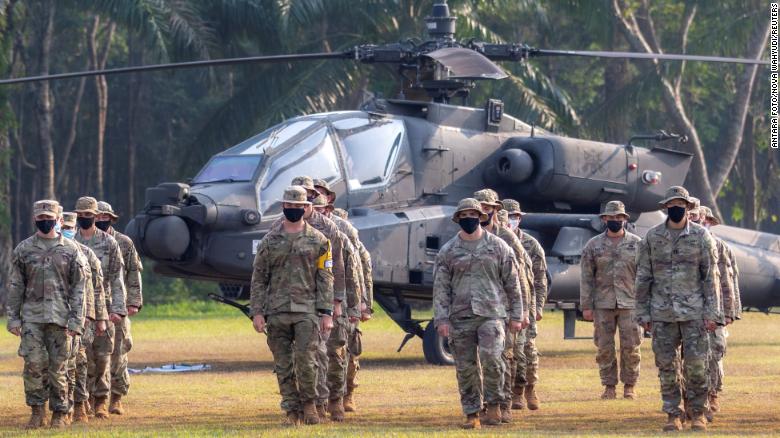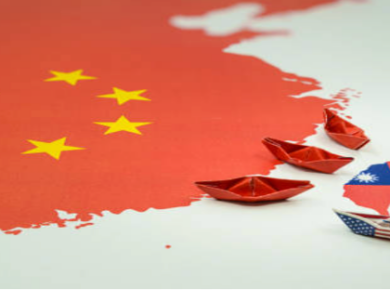Disclaimer: This post reflects solely the opinion of the authors and should not be taken to represent the general views of IPPR’s management/ editorial team or those of fellow authors
Recent developments in the U.S.-Indo bilateral military exercise, Garuda Shield, have largely flown under the radar of international media. However, its significance should not be overlooked against the larger, global, context.
Recent Developments
Organised annually, Exercise Garuda Shield is a bilateral military exercise between the Republic of Indonesia and the United States (U.S.). While it has been ongoing since 2009, two noteworthy developments were recently announced for this year’s edition of the exercise set to be held in August. Firstly, the structure of the exercise will be expanded to include a trilateral component which involves the integration of the land, sea and air elements of both militaries. Secondly, and perhaps more significantly, this year’s exercise will involve 14 different countries and has been dubbed as ‘Super Garuda Shield’. With an estimated combined force of 3000 personnel, these developments will make this year’s edition of Garuda Shield the largest one yet.
Why is this noteworthy?
While there has been limited international media coverage of these developments, their significance should not be overlooked.
Indonesia has consistently maintained that its foreign policy is ‘free and active’ (bebas aktif). Translated into clearer terms, the first component of this policy – ‘free’ – meant that against an international system characterised by webs of alliances and a multitude of ideological alignments, Indonesia sought to remain non-aligned to preserve its autonomy vis-à-vis the superpowers. Meanwhile, the ‘active’ aspect of the policy contains within it the state’s agenda to challenge imperialism. Stemming from this, Indonesia has therefore traditionally been wary of the involvement of superpowers in Southeast Asian affairs. For instance, author Dewi Fortuna Anwar recounts how while other states in the Association of Southeast Asian Nations (ASEAN) sought the involvement of superpowers to enforce the proposal of a Zone of Peace, Freedom and Neutrality in the 1970s, Indonesia vehemently rejected this arrangement to prevent the region’s entanglement in the great power politics of that time. Set against this context, the recent developments in Garuda Shield – with Indonesia’s Foreign Minister declaring at last year’s exercise that the U.S. and Indonesia had entered a ‘new era of bilateral relations’ – are therefore significant. It seems to indicate Indonesia’s implicit westward alignment and softening of its ‘free and active’ foreign policy doctrine, adding to the existing doubt over the doctrine’s continued worth.
What is behind this development?
An assessment of the recent developments in Garuda Shield would not be complete without addressing the factors driving them and, more broadly, influencing U.S. – Indo relations.
At the forefront would be Indonesia’s recent squabble with China over the former’s activities in the waters around the Natuna Islands. In early 2021, Indonesia had carried out drilling operations for oil and natural gas in the waters surrounding the islands which it deems to be within its Exclusive Economic Zone (EEZ). The same waters fall inside China’s claim of the nine-dashed line which it unilateral declares as a demarcation of its sovereign territory. Indonesia’s actions, therefore, led to Chinese officials lodging a silent diplomatic protest and dispatching a coast guard vessel to the area, with Indonesia responding in kind.
China’s Nine-Dashed Lined claims (Source: DW News)
It is crucial to note that this was not an isolated incident. More broadly, there has been growing Chinese assertiveness in the region. For instance, in the middle of 2021, 16 fighter aircraft from the People’s Liberation Army Air Force breached Malaysian airspace, causing much uproar. On another occasion that had transpired towards the end of last year, Chinese coast guard vessels harassed two Philippines supply ships on their way to an atoll located in the disputed waters of the South China Sea. Amidst this trend, countries in Southeast Asia beyond Indonesia have similarly sought to enhance the U.S.’ engagement in the region. This is most evident in how Vietnam has gradually stepped up its defence relations with the U.S. over the last decade, while Singapore’s Prime Minister recently expressed that it is ‘critical’ that the U.S. remained engaged in the Asia-Pacific. Thus, the latest developments to Garuda Shield as well as U.S. – Indo defence relations can be viewed as part of a wider, regional, effort to balance against China’s regional ambitions.
A U.S. aircraft carrier anchored in Vietnamese waters in 2018, the first American aircraft carrier to have done so since the Vietnam War. This was read as a sign of military rapprochement between the two countries amidst a common threat – China (Source: National Public Radio)
But beyond the veil of growing Chinese aggression in the region, could Indonesia’s Middle Power ambitions be another factor accounting for the exercise’s expansion to include 14 other countries? With itself at the helm together with the U.S., Garuda Shield could serve as a convenient platform to portray and reinforce Indonesia’s leading role in the region. Admittedly, this assessment is purely speculative – the predominantly land-based exercise does not conform with Indonesia’s maritime-centred strategic vision of turning into a Global Maritime Fulcrum. Nonetheless, observers note Indonesia’s regional ambitions. Against this backdrop, the links between recent developments in Garuda Shield and Indonesia’s regional ambitions, therefore, deserve closer investigation.
What are the implications?
The Chinese have not released an official comment on the recent developments in Garuda Shield, but it is clear what their attitudes are towards it. Chinese officials did lodge a discrete diplomatic protest in 2021 against the exercise’s growing scale.
In the grand scheme of things, the recent expansions to Garuda Shield seem to be yet another minor development in the region’s efforts to enhance the U.S.’ engagement in that part of the world and keep Chinese hegemonic ambitions in check. The scant media attention paid to the development’s significance could be ascribed to the increasing normalisation of the U.S.’ growing regional engagement. However, this does not, therefore, mean that any less attention should be paid to such developments. Amidst the multitude of pressures the Chinese government presently faces – domestically with growing restlessness amongst Chinese citizens[TW1] toward the state’s zero-Covid strategy, internationally with the strengthening pushback [TW2] from the U.S. and its allies, and economically with its struggle to attain growth targets [TW3] – developments like Garuda Shield only compound these pressures and increase tensions.
What this means, more worryingly, is that developments such as Garuda Shield narrow the room for miscalculation between China and the U.S. The insidious culmination of such developments could very well lead the wider U.S.-China tensions to a breaking point.
By Tan Wei,
Tan is a year 1 undergraduate in the BSc Politics and International Relations programme and is interested in current affairs issues related to defence and international relations.







